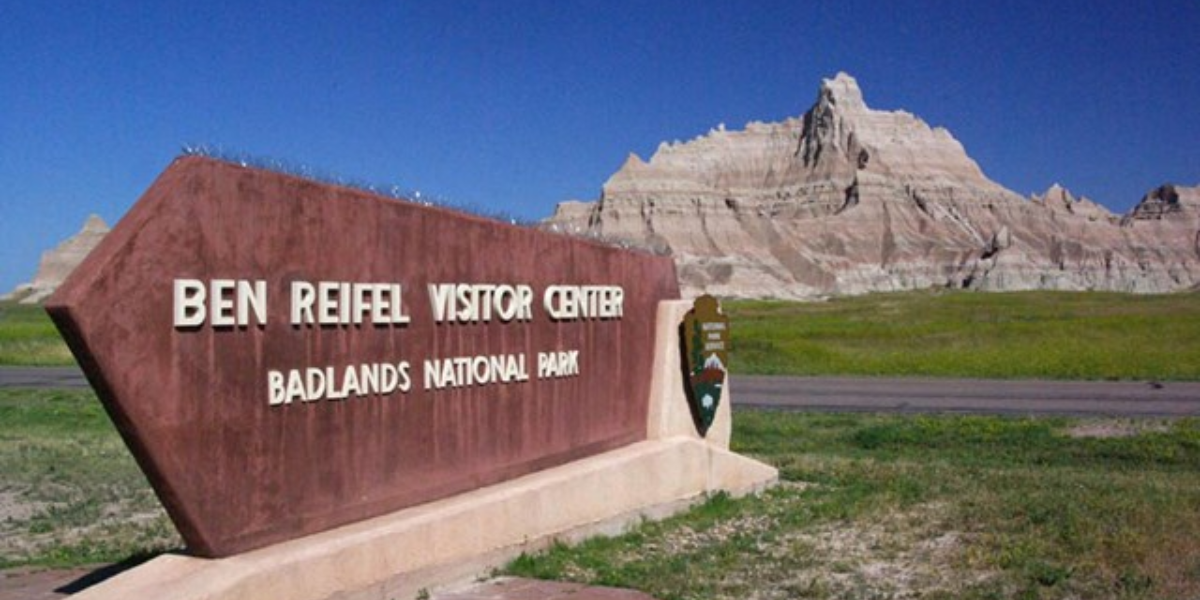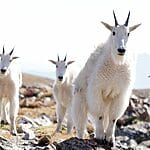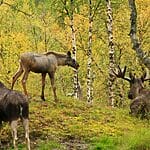12 Interesting Animals in South Dakota – You Might Not Know
South Dakota is home to a variety of interesting animals, including some of the most interesting rare and endangered species.A wide variety of interesting animals in south Dakota like The elusive black-footed ferret, on the brink of extinction, finds refuge in the South Dakota state, making each sighting a testament to conservation efforts.

The majestic swift fox, a rare sight in the prairies, adds to the allure of South Dakota’s unique fauna. For tourists, the allure extends beyond the rare and endangered. Witnessing the iconic bison herds roaming freely in Custer State Park provides a glimpse into the state’s storied past, while the vibrant avian life, including the striking bald eagle, offers birdwatching enthusiasts a treat.

Moreover, tourists can also experience a unique blend of adventure and education. From observing iconic bison herds in Custer State Park to marveling at the swift grace of pronghorns in the Badlands, the state provides an immersive experience.
Best Spots to Find Interesting Animals in South Dakota – (With Interesting Pictures)
South Dakota, with its diverse landscapes, offers an array of the best spots for encountering interesting animals. The state also serves as a sanctuary for the majestic bighorn sheep, symbolizing both the rugged beauty of the Black Hills and the conservation efforts in place.

Additionally, we have gathered 12 interesting animals in South Dakota, and the best places to spot them.
Badlands National Park
Badlands National Park in South Dakota stands as a geological masterpiece, boasting a mesmerizing landscape. Spanning 244,000 acres, the park showcases a surreal panorama of sharply eroded buttes, deep canyons, and striking spires, painted in a spectrum of earthy hues.

This dramatic setting serves as a haven for a variety of interesting animals in South Dakota. Among them, the pronghorns elegantly navigate the rugged terrain, while bighorn sheep exhibit their tenacity along the rocky cliffs.
Notably, the park contributes significantly to the conservation of interesting animals like the elusive black-footed ferret, a rare and endangered species. As visitors traverse the Badlands, they are not only immersed in the geological wonders but also encounter a diverse array of wildlife.
Black Footed Ferrets (Mustela nigripes)
The black-footed ferrets are one of the most interesting animals in South Dakota and are an endangered species. The ferrets are primarily found in the United States and Canada.
Historically on the brink of extinction, these interesting animals live in Prairie dogs’ habitats, as prairie dogs constitute a significant part of their diet.

Black-footed ferrets are highly specialized predators, preying mainly on prairie dogs to sustain their carnivorous diet. In South Dakota, Custer State Park and Badlands National Park are among the best places to spot black-footed ferrets
Sadly, these ferrets are classified as “Endangered Species” on the IUCN Red List, facing threats like habitat loss, disease, and the decline of prairie dog populations, essential to their survival.
Prairie Dogs (Cynomys)
Prairie dogs, small, social rodents, are native to North America. These interesting animals in South Dakota are also found in the United States, Mexico, and Canada. Prairie dogs live in grasslands and prairies, where their intricate burrow systems provide shelter and protection.

Their diet mainly consists of grasses, seeds, and plants, playing a crucial role in ecosystem dynamics through their foraging and burrowing activities. In South Dakota, Custer State Park and Badlands National Park offer ideal habitats to observe prairie dogs in their natural environment.
The black-tailed prairie dog is categorized as “Least Concern,” while the Utah and Mexican prairie dogs are considered “Near Threatened” and “Endangered,” on the IUCN red list of Threatened species. Threats to their populations include habitat loss due to agriculture, disease, and extermination efforts.
Mule Deer (Odocoileus hemionus)
These wild animals are widely distributed across North America, spanning the United States, Mexico, and Canada. They are adaptable herbivores that thrive in diverse habitats, ranging from arid deserts to mountainous regions, displaying a remarkable ability to adjust to various environments.

These interesting animals in South Dakota prefer open woodlands, grasslands, and brushy areas, showcasing their versatility in adapting to different terrains. Their diet consists of a variety of vegetation, including shrubs, leaves, and grasses.
In South Dakota, Custer State Park and Badlands National Park are prime locations for spotting mule deer, where expansive grasslands and mixed landscapes provide ideal conditions for these creatures.
On the IUCN red list, the mule deer are classified as “Least Concern,” However, like many wildlife species, they face threats such as habitat fragmentation, human encroachment, and predation.
South Dakota Game, Fish & Parks
South Dakota Game, Fish & Parks is located in Pierre, the capital city of South Dakota. The South Dakota Game, Fish & Parks (SDGFP) oversees an array of fascinating animals that inhabit the state’s varied ecosystems.

SDGFP oversees various state parks, ensuring the protection and preservation of unique ecosystems that support interesting wildlife. Among the interesting animals in South Dakota Game, Fish & Parks are the majestic elk, agile pronghorns, and the elusive black-footed ferret.
Tourists can enjoy a plethora of outdoor activities and wildlife experiences. In the picturesque state parks managed by SDGFP, visitors can enjoy camping, hiking, and birdwatching amid stunning natural landscapes.
Mountain Lions (Puma concolor)
Mountain lions, also known as cougars or pumas are interesting animals in South Dakota. They have a vast distribution across the Americas, inhabiting countries from Canada to Argentina. In the United States, they are found in regions like South Dakota, particularly in the Black Hills and other mountainous terrains.
These solitary predators prefer diverse habitats, ranging from forests and grasslands to deserts, adapting well to a variety of environments.

Mountain lions are carnivorous apex predators, feeding on deer, elk, and smaller mammals. In South Dakota, the Black Hills provide suitable habitats for spotting these elusive big cats, but due to their elusive nature, sightings are rare.
Currently, the IUCN Red List categorized the mountain lion as a species of “Least Concern.” However, their populations face threats such as habitat fragmentation, human-wildlife conflict, and declining prey populations.
Mountain Goats (Oreamnos americanus)
Mountain goats are interesting animals thriving in South Dakota, and primarily inhabiting rugged mountainous regions from Alaska and western Canada to the U.S. Rockies and the northern U.S. Cascades.
These sure-footed creatures thrive in alpine environments, showcasing an incredible ability to navigate cliffs and rocky terrains.

They are native to South Dakota, and their diet consists of grasses, herbs, and shrubs. In South Dakota you can spot Custer State Park in the Black Hills offers opportunities to spot mountain goats in their natural habitat.
On the IUCN red list of threatened species the mountain goats are categorized as “Least Concern,” However, they face threats such as habitat loss due to development, climate change impacting their alpine habitats, and potential competition with introduced species.
Wild Turkeys (Meleagris gallopavo)
Wild turkeys are interesting animals in South Dakota and are native to North America. They are found primarily in the United States and Mexico. These iconic birds inhabit diverse environments, ranging from forests and woodlands to grasslands.

In South Dakota, the turkeys flourish in various regions, including the Black Hills and surrounding areas. These interesting animals feed on seeds, berries, insects, and small vertebrates, wild turkeys are adaptable omnivores. Moreover, an ideal spot for observing wild turkeys is Custer State Park and the Black Hills.
On the IUCN red list of threatened species, these interesting animals are classified as “Least Concern,” However, historical factors such as habitat loss, overhunting, and changes in land use have posed challenges to their populations.
Custer State Park
Custer State Park, nestled in the Black Hills of South Dakota, stands as a testament to the state’s natural beauty and diverse wildlife. Covering 71,000 acres of sprawling prairies, granite peaks, and serene lakes, the park offers a picturesque backdrop for outdoor enthusiasts.

Beyond its stunning landscapes, Custer State Park is renowned for hosting a captivating array of interesting animals in South Dakota. You can spot the iconic bison herds in the park that freely roam in the grasslands.
Additionally, visitors can encounter charismatic prairie dogs, stately elk, and white-tailed deer. The park’s commitment to wildlife preservation ensures that these interesting animals continue to thrive.
Wild Donkeys (Equus africanus)
Wild donkeys, or burros, are found in various countries around the world, including the United States. In South Dakota, the Custer State Park is home to wild donkeys. These interesting animals in South Dakota are descendants of domesticated donkeys and thrive in the park’s diverse landscape.

Wild donkeys are adaptable herbivores, feeding on a variety of vegetation such as grasses, shrubs, and forbs. Visitors to Custer State Park can often spot these interesting animals along the park’s scenic byways, particularly the Wildlife Loop Road.
While wild donkeys are not specifically listed on the IUCN Red List, various domestic donkey breeds such as African wild asses are listed as “Critically Endangered.” Threats to wild donkeys include habitat loss, competition for resources with livestock, and, in some cases, conflicts with human activities.
Bighorn Sheep (Ovis canadensis)
Bighorn sheep are native to North America and can be found in various countries, including the United States, Canada, and Mexico. In South Dakota, these interesting animals inhabit rugged terrains, particularly the Black Hills and Badlands regions.

These wild animals are known for their impressive curved horns. They navigate cliffs and rocky landscapes, showcasing their adaptability to challenging environments.
Bighorn sheep are herbivores, primarily feeding on grasses, shrubs, and other mountainous vegetation. The Custer State Park and Badlands National Park are among the best places to spot their free-roaming herds in South Dakota.
Additionally, these interesting animals are classified as “Least Concern,” However, there are some major threats to their population such as habitat fragmentation, disease transmission from domestic livestock, and overharvesting.
Pronghorns (Antilocapra americana)
Pronghorns are interesting animals also popular as “speed goats” in North America. They are primarily found in most counties west of the Missouri River, and parts of Mexico.
Their natural habitat spans vast grasslands, deserts, and shrublands, where their remarkable speed, capable of reaching 55 mph, serves as a defense mechanism against predators.

In South Dakota, particularly the Badlands National Park, Custer State Park, and the prairies, one can spot pronghorns gracefully navigating the terrain. Despite their adaptability, pronghorns face conservation concerns.
The IUCN Red List categorizes them as “Least Concern,” yet habitat fragmentation, human development, and barriers affecting migration routes pose significant threats to their populations.
Bald Eagles (Haliaeetus leucocephalus)
The bald eagles are interesting animals in western South Dakota and are primarily found in North America, and Canada. This iconic bird of prey prefers diverse habitats, including coastal areas, lakes, rivers, and marshes.

Bald eagles are known for their impressive hunting skills, preying on fish and waterfowl. In South Dakota, these interesting animals can be spotted near large bodies of water, particularly around lakes and along the Missouri River.
They are classified as “Least Concern” on the IUCN red list of threatened species, However, they still face threats such as habitat loss, pollution, and human disturbance.
Dakota Skipper (Hesperia dacotae)
The Dakota Skipper is an interesting butterfly species native to North America, primarily found in the United States and Canada. Within South Dakota, these captivating insects inhabit native prairies, meadows, and grasslands, contributing to the region’s biodiversity.

As an integral part of the ecosystem, Dakota Skippers rely on nectar from a variety of flowering plants for sustenance, displaying their dependence on healthy prairie habitats.
South Dakota’s unique natural areas, such as Wind Cave National Park and the prairies surrounding Custer State Park, provide excellent opportunities to spot Dakota Skippers in their native environment.
The Dakota Skipper is facing conservation concerns, with a current IUCN Red List status of “Vulnerable Species.” Threats to their population include habitat loss due to agricultural expansion, pesticides, and the encroachment of invasive species.
Ring-necked Pheasant (Phasianus colchicus)- The State Bird of South Dakota
The ring-necked pheasant, the vibrant state bird of South Dakota, contributes to the state’s rich avian heritage. They were introduced to North America in the late 19th century, this striking and colorful upland game bird has become an iconic symbol of South Dakota’s diverse landscapes.

These interesting animals in south dakota are characterized by iridescent plumage, distinctive white neck rings, and robust crowing, the ring-necked pheasant is a popular game species and a joy for birdwatchers.
Thriving in the state’s grasslands, croplands, and shelterbelts, these birds have established a robust population in South Dakota. Their adaptability and resilience have made them a staple of the state’s outdoor recreational activities, attracting hunters and wildlife enthusiasts alike.
Interesting and Endangered Wildlife in South Dakota
The endangered wild animals in South Dakota showcases a remarkable array of species facing unique challenges. In this dynamic ecosystem, conservation efforts play a vital role in preserving the state’s biodiversity.
Moreover, we have listed below some endangered, and critically endangered animals in South Dakota.
Black-footed Ferret (Mustela nigripes):
Once on the brink of extinction, these elusive predators are making a remarkable comeback, with conservation initiatives centered in South Dakota. Custer State Park and Wind Cave National Park are key areas for spotting these intriguing creatures.
Swift Fox (Vulpes velox):
With a dwindling population due to habitat loss and agricultural expansion, the swift fox is a small canid native to the prairies of South Dakota. Protected areas like Badlands National Park offer critical habitats for their survival.
Northern Great Plains Piping Plover (Charadrius melodus):
This migratory bird, known for its distinctive piping calls, faces habitat loss and disturbance. Lakeshores and sandbars along the Missouri River serve as crucial nesting sites for their survival.
Mountain Plover (Charadrius montanus):
Thriving in short-grass prairies, the mountain plover is at risk due to habitat alteration and human activities. South Dakota’s prairie ecosystems play a vital role in the conservation of this endangered bird.
Topeka Shiner (Notropis topeka):
A small minnow native to the Great Plains, the Topeka shiner faces habitat degradation, primarily due to changes in stream flow and water quality. Conservation efforts in South Dakota focus on maintaining suitable aquatic habitats for their recovery.
Frequently Asked Questions about Interesting Animals in South Dakota
What animals are South Dakota known for?
Some interesting animals that South Dakota is known for are Bison, Prairie dogs, Pronghorn, Coyote, Bighorn sheep, White-tailed deer, and Mountain lion.
What is the main animal in South Dakota?
The national animal of South Dakota is Coyote.
What is the largest rodent in South Dakota?
Beavers are the largest rodents in South Dakota.
Are there badgers in South Dakota?
Yes, there are badgers in South Dakota, and you can spot them in open grasslands.









